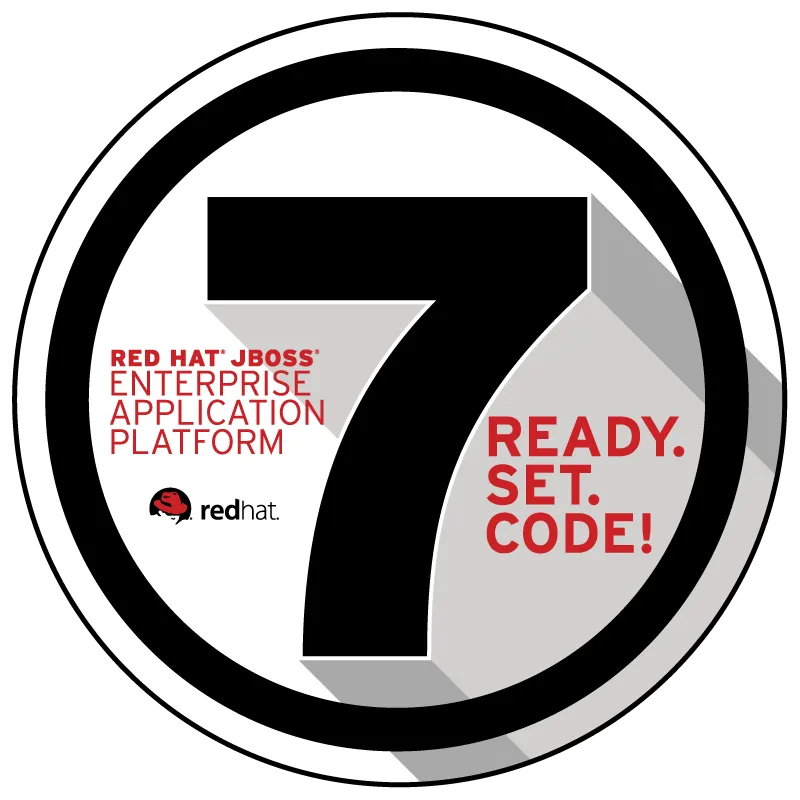Red Hat JBoss Enterprise Application Platform 7 is here.
This is a significant new release. There are the obvious benefits -- Java EE 7 certification, numerous bug fixes, a simplified and more intuitive administrative UI -- but there are a lot of features just under the hood that really make JBoss EAP 7 a pathway for IT departments and app developers to move their projects forward.
Agility and Transformation
There are a lot of buzzwords and think-pieces on changes in IT, like bimodal development, microservices, DevOps, digital transformation, big data, Internet of Things.
What these buzzy words are trying to explain, though, is the real tension and transition in trying to move older application architectures and processes to take advantage of true advances in technology, like cloud and containers.
This is where JBoss EAP 7 can work as a supporting partner in IT departments, because JBoss EAP 7 can function effectively on both sides of that transition.
JBoss EAP 7 takes full advantage of the Java EE 7 spec, and it is certified on the full Java EE profile. For large, monolithic Java applications, JBoss EAP 7 offers strong and resilient support with effective resource management, distributed caching, large domains with high availability clustering, intelligent load balancing, and other features that can handle the loads from large enterprises. It is compatible with traditional Java applications and capable of handling business-critical applications.
However, the nature of applications are changing. As businesses start introducing microservices to replace monoliths or to incorporate mobile apps with their traditional applications, you also need a platform that can support lightweight, fast, data-rich architectures. JBoss EAP 7 has been optimized to run in resource-light environments like containers and cloud instances and it natively works with tools like Fabric8, Vert.X, and OpenShift so that development teams can rapidly (and consistently) build and deploy applications.
Developer-Focused
There are three key elements to app development: architecture, process, and platform. Only “platform” is technology-centric, but the right technology can support what you’re doing with architecture and process.
DevOps and continuous integration / delivery (CI/CD) are more effective if there are tools that help rapid deployment, and JBoss EAP 7 introduces or enhances several features that aid quick deployment:
- Native integration with DevOps tools including Arquillian, Maven, and Jenkins
- Specialized profiles to run on Red Hat OpenShift (container environments)
- Lightweight, optimized performance on resource-constrained environments like containers and cloud instances
- Faster startup times (in just a couple of seconds) and graceful shutdowns
- Support for new app development tools like Fabric8 (for container-based microservices) and Vert.X (for reactive applications)
Bullet List of Awesome
JBoss EAP 7 offers a lot of additional features. A complete list is available in the JBoss EAP 7 release notes, but these are some more highlights:
- Java EE 7 certification
- Unified domain management over both JBoss EAP 6 and JBoss EAP 7 servers
- A unified messaging subsystem, relying on Artemis ActiveMQ
- An embeddable, lightweight web server based on the Undertow project
- New transactions subsystem, based on the Narayana project
- Resilient high availability features including clustering and distributed caching
- Memory analyzer and other resource management tools
Additional Resources
There are many resources available on both the Customer Portal and redhat.com to get more detailed information about JBoss EAP 7.
저자 소개
Deon Ballard is a product marketing manager focusing on customer experience, adoption, and renewals for Red Hat Enterprise Linux. Red Hat Enterprise Linux is the foundation for open hybrid cloud. In previous roles at Red Hat, Ballard has been a technical writer, doc lead, and content strategist for technical documentation, specializing in security technologies such as NSS, LDAP, certificate management, and authentication / authorization, as well as cloud and management. She also wrote and edited the Middleware Blog for Red Hat and led portfolio solution marketing for integration and business automation.
유사한 검색 결과
채널별 검색
오토메이션
기술, 팀, 인프라를 위한 IT 자동화 최신 동향
인공지능
고객이 어디서나 AI 워크로드를 실행할 수 있도록 지원하는 플랫폼 업데이트
오픈 하이브리드 클라우드
하이브리드 클라우드로 더욱 유연한 미래를 구축하는 방법을 알아보세요
보안
환경과 기술 전반에 걸쳐 리스크를 감소하는 방법에 대한 최신 정보
엣지 컴퓨팅
엣지에서의 운영을 단순화하는 플랫폼 업데이트
인프라
세계적으로 인정받은 기업용 Linux 플랫폼에 대한 최신 정보
애플리케이션
복잡한 애플리케이션에 대한 솔루션 더 보기
오리지널 쇼
엔터프라이즈 기술 분야의 제작자와 리더가 전하는 흥미로운 스토리
제품
- Red Hat Enterprise Linux
- Red Hat OpenShift Enterprise
- Red Hat Ansible Automation Platform
- 클라우드 서비스
- 모든 제품 보기
툴
체험, 구매 & 영업
커뮤니케이션
Red Hat 소개
Red Hat은 Linux, 클라우드, 컨테이너, 쿠버네티스 등을 포함한 글로벌 엔터프라이즈 오픈소스 솔루션 공급업체입니다. Red Hat은 코어 데이터센터에서 네트워크 엣지에 이르기까지 다양한 플랫폼과 환경에서 기업의 업무 편의성을 높여 주는 강화된 기능의 솔루션을 제공합니다.


